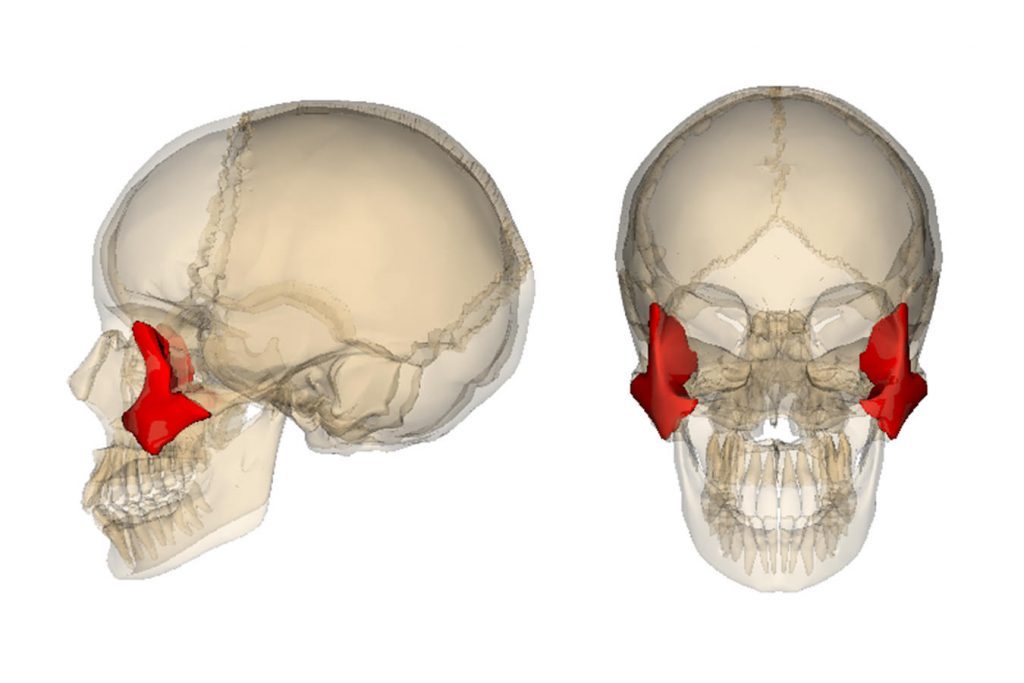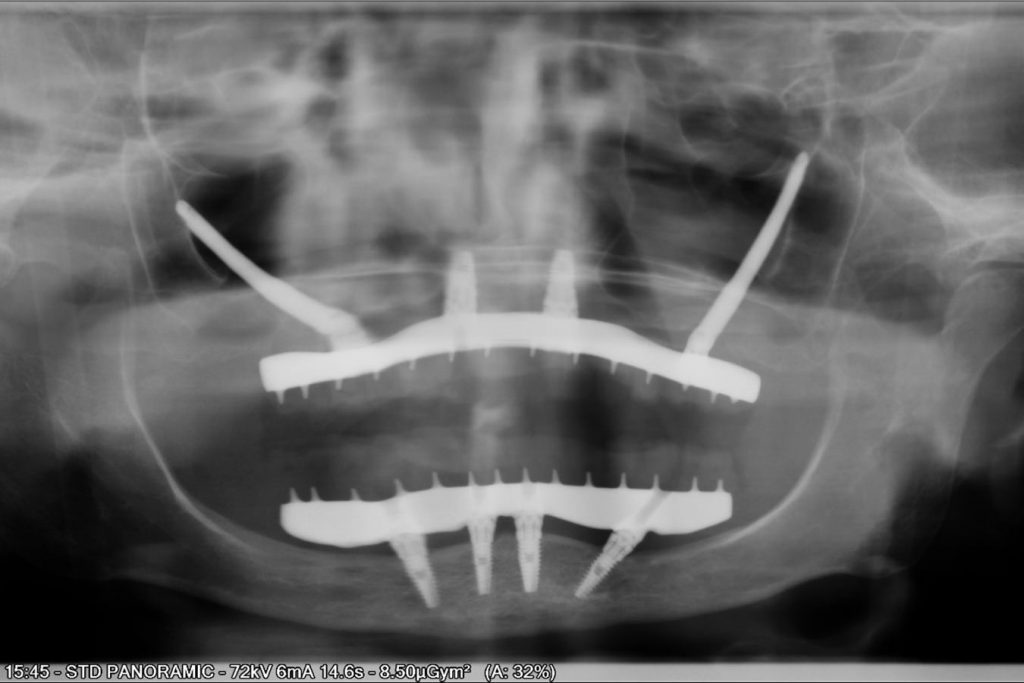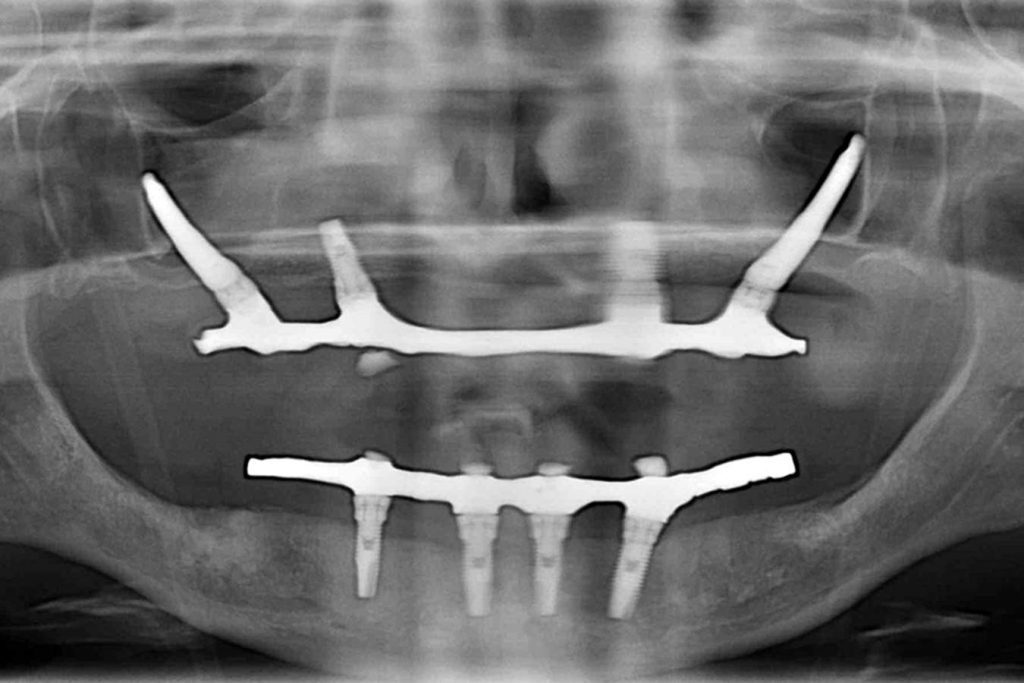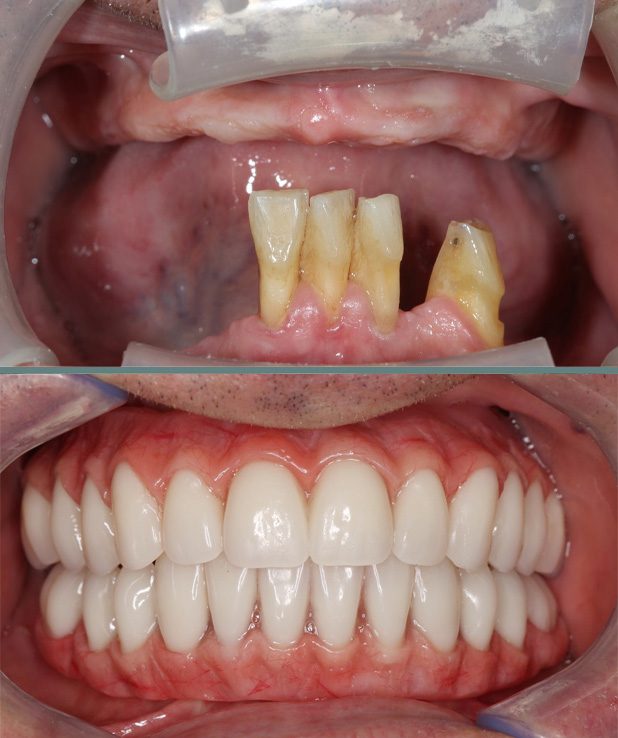Dentistry
Zygomatic Implants
What are Zygomatic Implants?
Zygomatic implants are dental devices placed in the zygomatic bone, also known as the malar bone before 1998.
This technique, called Zygomatic Implant Placement or Zygomatic Transfixation, is primarily used in oral rehabilitation cases, especially when there is significant loss of bone structure in the upper jaw.
Zygomatic implants have been used for decades, initially in patients who required rehabilitation after tumor resections, where a large portion of the facial structures was removed. The technique has evolved to provide fixed and stable solutions for totally edentulous patients, meaning those who have no teeth in the upper or lower jaws.

Main Advantages
Zygomatic implants provide an effective solution for patients with severe bone loss in the upper jaw, allowing for oral rehabilitation without the need for bone grafts.
They are particularly useful in cases where conventional methods are not viable due to insufficient bone for fixation.
What you need to know
The surgery for placing zygomatic implants is complex and must be performed by highly qualified surgeons. The technique involves a more extensive operative field than conventional maxillary surgery and requires in-depth and specialized knowledge.
Although, like any surgery, it carries risks, when performed by competent professionals and with well-informed and cooperative patients, the technique is safe and predictable. The possibility of immediate rehabilitation, with screw-retained teeth on the same day, depends on the quality of the bone and the insertion forces of the implants.
In many cases, patients use a removable prosthesis for a period of 6 to 8 months while the implants undergo osseointegration. After this period, the new structures are permanently fixed.
Indications for Treatment

Patient: M.F.F., female, 68 years old.

Paciente: C.R., sexo feminino, 46 anos.
Os implantes zigomáticos são utilizados no maxilar superior devido à proximidade anatómica com o osso zigomático.
Podem ser combinados com implantes dentários convencionais em casos de reabsorção óssea moderada ou utilizados isoladamente em reabsorções ósseas severas, fixando a estrutura protética diretamente no osso zigomático.
Final considerations
Zygomatic implants are an advanced and effective solution for oral rehabilitation in cases of severe bone loss. The technique, although complex, offers predictable and safe results when performed by qualified professionals. Our team is dedicated to studying, teaching, and practicing this technique to provide our patients with a better quality of life.
If you have any doubts or feel discomfort when smiling, consult your dentist. Smiling doesn’t hurt, but if it does, we will seek the best solution for you.




